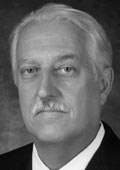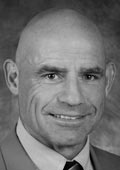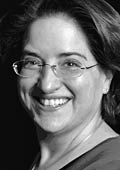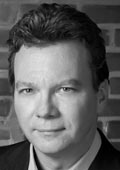
A distinguished lineup of allied healthcare professionals are coming to Texas A&M’s College of Architecture to discuss issues related to health care and healthcare facility design for the Spring 2010 Architecture-For-Health Lecture Series.
This spring, lectures will focus on case studies of interdisciplinary team collaborations in the design-build process, emphasizing the design of accessible, lean, sustainable, quality, cost-effective primary and community healthcare facilities.
The lectures, all free and open to the general public, are scheduled at 11:30 a.m. on Wednesdays, unless otherwise noted, in the college’s Wright Gallery, located on the second floor of the Langford A building on the Texas A&M campus.
The lecture series, advised by the Texas A&M Health Science Center, is co-sponsored by the Center for Health Systems & Design, the CHSD Health Industry Advisory Council, the Student Health Environments Association, Global University Programs in Healthcare Architecture, the Texas A&M College of Architecture and the Department of Architecture.
The speakers and topics include:
 Jan. 26 — Larry Gamm
Jan. 26 — Larry Gamm
“Organizational Technologies for Coordinating Healthcare”
Gamm, director of the Center for Health Organization Transformation at Texas A&M’s Health Science Center, is engaged in funded research and evaluation projects focused on health organization transformation, health information exchange, medical homes, multi-project management and disease management. He has also conducted recent research and authored publications on mental health and substance abuse, including a paper on a national study of shortages of nurses and ancillary personnel among rural hospitals submitted to the Institute of Medicine Committee on the Future of Rural Health Care.
 Feb. 2 — Craig H. Blakely
Feb. 2 — Craig H. Blakely
“Causes of Illness and Death in the U.S.: The Global Context”
Blakely is dean of the School of Rural Public Health at Texas A&M's Health Science Center. The school's mission is to improve the health of communities, with emphasis on rural and underserved populations, through education, research, service, outreach and creative partnerships.
 Feb. 9 — T. Samuel Shomaker
Feb. 9 — T. Samuel Shomaker
“The Use of Technology
in Today’s Medical School”
Shomaker is the Jean and Thomas McMullin Dean of Medicine and vice president for clinical affairs at the Texas A&M Health Science Center. Author of more than 36 articles and several book chapters about health policy, Shomaker has served on numerous committees of the Association of American Medical Colleges. He has served as a site visitor for the accrediting body for U.S. medical schools, the Liaison Committee on Medical Education, for more than 10 years and headed institutional accreditation preparations in Utah and Hawaii.
 Feb. 11 — Derek Dictson
Feb. 11 — Derek Dictson
“Health for All: An Accessible,
Lean, Sustainable, Quality
and Cost Effective Nonprofit
Free Health Clinic”
Dictson is the executive director of Health for All, a Bryan, Texas clinic thatdelivers primary and preventative health care services to thousands of patients annually, including those who don’t qualify for Medicaid, Medicare or county indigent funds. The clinic’s patients are between 18 and 64 years old, 80 percent of whom earn less than $1,500 a month. More than 60 percent of patients are female and most are single parents.
 Feb. 16 — David Rubenstein
Feb. 16 — David Rubenstein
“Leadership That Ensures an Interdisciplinary Team Approach
to Designing Accessible, Lean, Sustainable, Quality Primary and Community Healthcare Facilities”
Rubenstein is commanding general of the Army Medical Department Center and School and chief of the Army Medical Service Corps. A board-certified healthcare executive and past chairman of the 37,000-member American College of Healthcare Executives, Rubenstein previously served on the ACHE’s Board of Governors and Council of Regents. He has authored numerous peer-reviewed professional articles, has two books on military medical history in progress, and has served as a book reviewer in professional military journals such as Military Review, Army, and Military Medicine.
 Feb. 23 — Lillian Woo
Feb. 23 — Lillian Woo
“An Imperative for the Built Environment: Ecomimesis”
Lillian Woo, an economist specializing in public policy issues, is the co-author of “Dictionary of Ecodesign, An Illustrated Reference.” The book, written with internationally renowned architect Ken Yeang, is a guide to the terminology of sustainable design, providing more than 1500 definitions and explanations of ecodesign terms. It is a reference for architects, engineers, planners and environmentalists involved in designing and planning projects and schemes in the built environment. The duo is currently writing “Ecomimesis: Ecological Design for the Built Environment Using Natural Processes as a Model.”
 March 2 — Rustin Becker
March 2 — Rustin Becker
“Trends in Improving Community Access to Care”
Becker, senior vice president of advance planning at Cogdell Spencer ERDMAN, has been involved in the development of a variety of healthcare facilities including hospitals, medical office buildings, single-specialty clinics, ambulatory care and surgery centers for more than 20 years. He focuses on programming and planning facilities that are operationally efficient and are positioned for implementation of evidence-based design solutions.
 March 9 — Wendy Weitzner
March 9 — Wendy Weitzner
“Community Medical Office Buildings: Collaboration of
Strategy, Operations, and Design
to Support New Care Models”
Weitzner, vice president of The Innova Group, draws upon 22 years of experience as an administrator and consultant to combine strategic, capital, clinical and facilities planning in complex development projects. She has developed planning analyses and solutions for clients ranging from small community hospitals to large academic medical centers in the private and public sectors. Prior to joining The Innova Group, she was corporate director of real estate, planning and development at Tufts Medical Center in Boston.
 March 23 — Joyce Durham
March 23 — Joyce Durham
“Planning Approaches for Primary and Community Healthcare”
Durham, principal for Health Strategies & Solutions, Inc., has directed the development of numerous master plans and detailed planning studies for inpatient and diagnostic services. During her more than 20 years of master facility planning, detailed functional and space programming and operations, she has developed extensive experience in inpatient unit design and has conducted specialized studies of many key clinical areas.
 March 30 — Dan H. Noble
March 30 — Dan H. Noble
“Smart Healthcare: Designing
to the New Normal”
Noble is principal, executive vice-president and director of design at HKS, Inc.Instead of imposing a predetermined architectural style onto a project, he believes a rational exploration of a facility’s needs and a whollydeveloped concept, embraced by all team members, will result in buildings that exude a sense of harmony and enjoy an appropriate relationship with a site. Noble is part of HKS’ four-member executive committee, which directs and manages the company’s strategy and operations.
 April 6 — Jim Snyder ‘78
April 6 — Jim Snyder ‘78
and John Snyder ’82
“Selected Case Studies of Collaboration between Architecture and Construction Firms: Primary and Community Healthcare Facilities and Reshaping Downtown Tulsa”
Jim Snyder is president, chairman and chief operating officer of Odell, a design firm based in Richmond, Va. He has a comprehensive background in master planning, facility evaluation, programming, planning, design, project management and certificates of need preparation for health care projects varying in size from major specialized treatment facilities and community hospitals to free-standing ambulatory and diagnostic centers. Snyder earned a Bachelor of Environmental Design degree in 1978 and a Master of Architecture degree in 1980.
 Jim’s brother, John Snyder,is president of Manhattan Construction Group’s Oklahoma division. The firm has been an early adopter of building technologies such as automated material expediting, electronic safety tracking, online collaboration tools and building information modeling with the goal of delivering better projects in a more efficient and user-friendly way to its clients. Snyder earned a Bachelor of Construction Science degree in 1982 from Texas A&M.
Jim’s brother, John Snyder,is president of Manhattan Construction Group’s Oklahoma division. The firm has been an early adopter of building technologies such as automated material expediting, electronic safety tracking, online collaboration tools and building information modeling with the goal of delivering better projects in a more efficient and user-friendly way to its clients. Snyder earned a Bachelor of Construction Science degree in 1982 from Texas A&M.
 April 14 — Jean Mah ’71
April 14 — Jean Mah ’71
“Designing for Relationships: Environments for Ongoing Relationship of Patient and Physician in Primary Care”
An outstanding alumnus of Texas A&M’s College of Architecture, Mah,as principal for Perkins+Will, leads its national healthcare practice and is a member of the firm’s board of directors. A fellow in he American College of Healthcare Architects, she has spoken widely and served on peer review panels on healthcare planning and design issues in the United States as well as China, Canada and Spain.Mah earned a Bachelor of Environmental Design degree from Texas A&M in 1971.
 April 20 — Deborah L. Sweetland
April 20 — Deborah L. Sweetland
“Planning, Designing, and Building ‘A Medical Home’ Using Lean, LEED and Evidence-Based Design”
- Posted: Jan. 24, 2011 -
Contact: Phillip Rollfing, prollfing@archone.tamu.edu or 979.458.0442.
